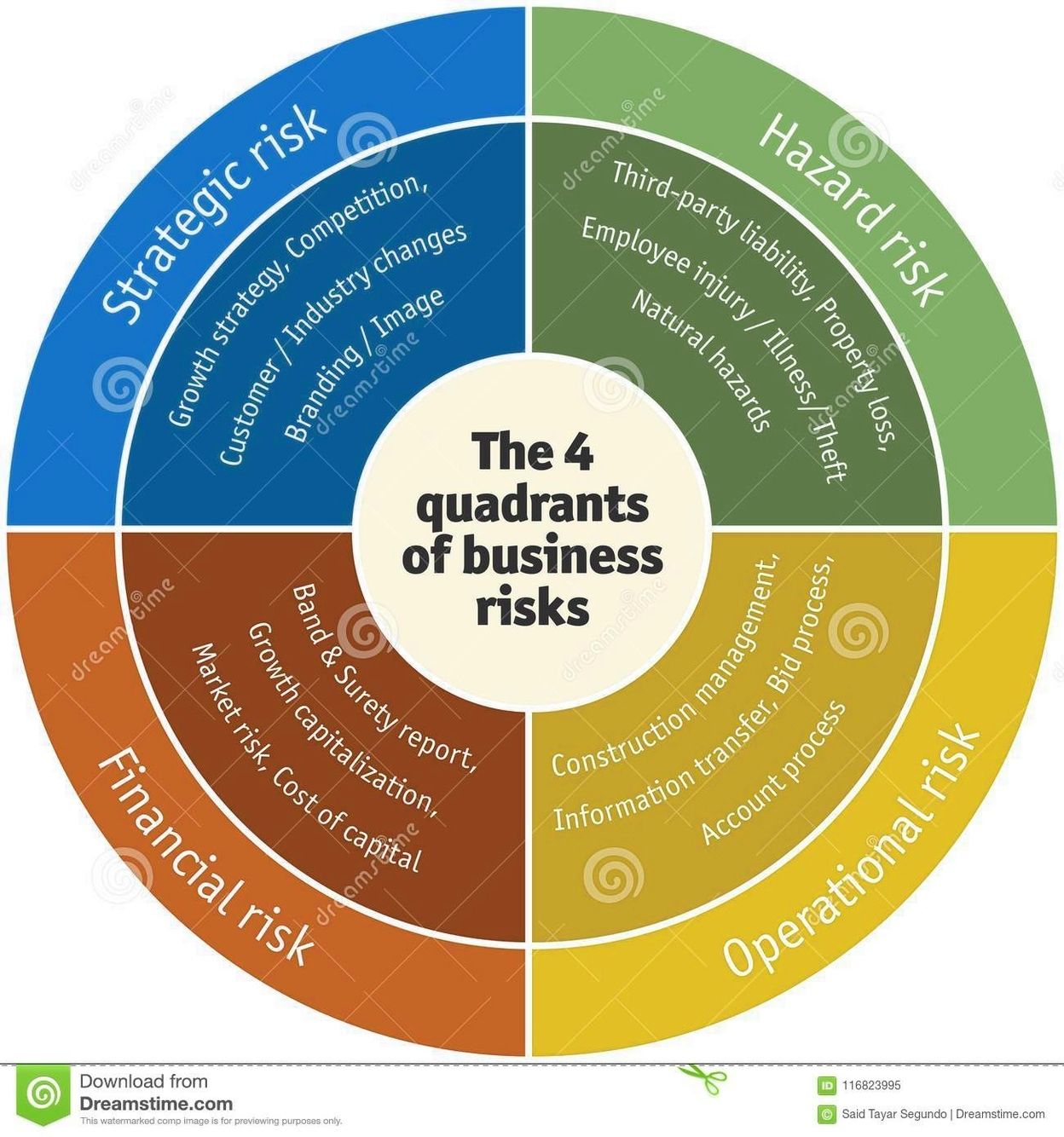
The four quadrants of business risks are a risk management tool that helps organizations identify and prioritize risks based on their potential impact and likelihood of occurrence. The four quadrants are:
1. Routine (low risk/low value): These risks are low in impact and likelihood, and they are typically managed through standard operating procedures.
2. Leveraged (low risk/high value): These risks have a low likelihood of occurring but can have a significant impact if they do. They are often managed through contingency plans.
3. Focused (high risk/low value): These risks have a high likelihood of occurring but are low in impact. They are often managed through risk mitigation strategies.
4. Strategic (high value/high risk): These risks have a high likelihood of occurring and can have a significant impact on the organization. They are often managed through risk avoidance or acceptance strategies.
The four quadrants can be represented using a value/risk matrix, which helps organizations visualize the relationship between the potential value of an opportunity or investment and the associated risks .
